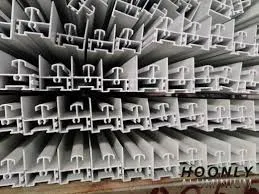gate welding
Gate Welding A Comprehensive Guide
Gate welding is a crucial process in the fabrication and installation of various types of gates, including ornamental, security, and driveway gates. This method not only ensures the structural integrity of the gate but also enhances its aesthetic appeal. Whether you are a DIY enthusiast or a professional welder, understanding the fundamentals of gate welding is essential to achieving a successful outcome.
The Importance of Gate Welding
Gates serve multiple purposes, from security and privacy to enhancing the overall appearance of a property. A well-welded gate withstands the test of time and protects against external elements and unauthorized access. Welding, as opposed to other fastening methods like screws or bolts, provides a robust bond that can support the weight and movement of the gate more effectively.
Types of Welding Techniques
There are several welding techniques commonly used in gate fabrication, each with its advantages
1. MIG Welding (Metal Inert Gas) This technique is popular for its speed and ease of use. It uses a continuously fed wire electrode and an inert gas to shield the weld from contaminants. MIG welding is suitable for various metals, including steel and aluminum, making it versatile for different gate designs.
2. TIG Welding (Tungsten Inert Gas) TIG welding offers greater precision and control, making it an excellent choice for intricate designs and thin materials. While it requires more skill, the results can be impressive, especially for artistic or decorative gates.
3. Stick Welding This method is less common in gate fabrication but can be useful for heavy-duty gates, particularly those made of thicker materials. Stick welding uses a consumable electrode coated in flux, which protects the weld from oxidation.
4. Spot Welding Primarily used in the manufacturing of gates, spot welding is beneficial for joining overlapping metal sheets. It is often used for fence panels or sections of gates where aesthetics are not the primary focus.
Preparing for Gate Welding
Before you begin welding, it is essential to prepare adequately
1. Select the Right Materials The choice of material will influence the welding technique and equipment used. Common materials for gates include mild steel, stainless steel, and aluminum.
gate welding

2. Gather Equipment Ensure you have the necessary tools, including a welding machine, safety gear (gloves, helmet, and apron), a grinder for surface preparation, and measuring tools for accuracy.
3. Plan Your Design Sketching a design will guide you through the welding process. Consider both functionality and aesthetics in your design to ensure that the final product meets your needs.
4. Prepare the Work Area A clean, well-ventilated workspace will minimize hazards. Remove any flammable materials and ensure you have an adequate setup for your welding equipment.
The Welding Process
1. Cut and Fit the Components Start by cutting your metal pieces to the desired lengths and angles. Ensure that all parts fit together snugly, as gaps can weaken the weld.
2. Tack Welding Begin by tack welding at the joints to hold the pieces in place. This preliminary step allows you to make adjustments before completing the full weld.
3. Weld the Joints Follow the chosen welding technique to secure the joints. For MIG and TIG welding, maintain a consistent speed and angle to ensure an even weld bead. In stick welding, ensure the electrode is at the correct angle to achieve penetration.
4. Clean Up the Welds After welding, grind down any rough edges or excess material to smooth the surface. This not only improves aesthetics but also helps prevent rust.
5. Finishing Touches Depending on the material used, consider applying a protective coating or paint to enhance durability and prevent corrosion.
Safety Considerations
Welding can be hazardous, so it is crucial to observe safety protocols. Always wear protective gear, ensure proper ventilation, and be mindful of your surroundings. Understanding the risks associated with welding, including burns, fumes, and electric shock, can help prevent accidents.
Conclusion
Gate welding is an invaluable skill that combines artistry and engineering. By mastering the techniques and following safety protocols, you can create durable, beautiful gates that enhance your property. Whether you are working on a simple design or an elaborate structure, the right approach to gate welding will ensure a successful and rewarding project.
-
Wrought Iron Components: Timeless Elegance and Structural StrengthNewsJul.28,2025
-
Window Hardware Essentials: Rollers, Handles, and Locking SolutionsNewsJul.28,2025
-
Small Agricultural Processing Machines: Corn Threshers, Cassava Chippers, Grain Peelers & Chaff CuttersNewsJul.28,2025
-
Sliding Rollers: Smooth, Silent, and Built to LastNewsJul.28,2025
-
Cast Iron Stoves: Timeless Heating with Modern EfficiencyNewsJul.28,2025
-
Cast Iron Pipe and Fitting: Durable, Fire-Resistant Solutions for Plumbing and DrainageNewsJul.28,2025
-
 Wrought Iron Components: Timeless Elegance and Structural StrengthJul-28-2025Wrought Iron Components: Timeless Elegance and Structural Strength
Wrought Iron Components: Timeless Elegance and Structural StrengthJul-28-2025Wrought Iron Components: Timeless Elegance and Structural Strength -
 Window Hardware Essentials: Rollers, Handles, and Locking SolutionsJul-28-2025Window Hardware Essentials: Rollers, Handles, and Locking Solutions
Window Hardware Essentials: Rollers, Handles, and Locking SolutionsJul-28-2025Window Hardware Essentials: Rollers, Handles, and Locking Solutions -
 Small Agricultural Processing Machines: Corn Threshers, Cassava Chippers, Grain Peelers & Chaff CuttersJul-28-2025Small Agricultural Processing Machines: Corn Threshers, Cassava Chippers, Grain Peelers & Chaff Cutters
Small Agricultural Processing Machines: Corn Threshers, Cassava Chippers, Grain Peelers & Chaff CuttersJul-28-2025Small Agricultural Processing Machines: Corn Threshers, Cassava Chippers, Grain Peelers & Chaff Cutters












